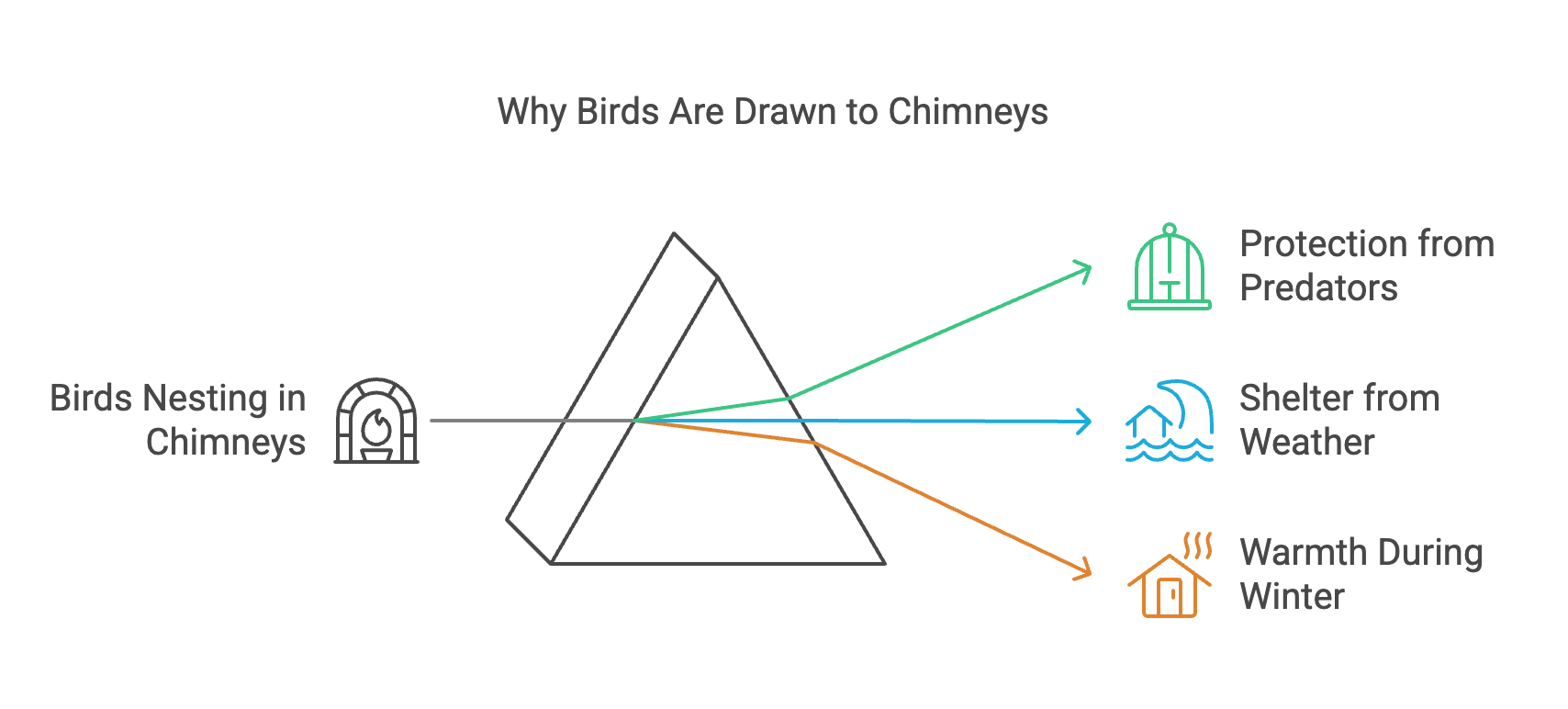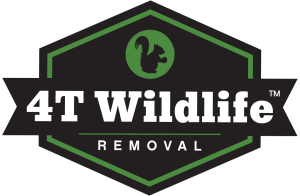
How to Keep Birds Out of Your Chimney & Roof This Winter
As North Alabama winter sets in, birds often seek warmth and shelter in the most inconvenient places—your chimney and roof vents. While it may seem harmless, birds nesting in these areas can cause blockages, structural damage, and even health hazards. Understanding why birds are attracted to these spots and taking proactive measures can help you protect your home from unwanted avian visitors.
Why Do Birds Nest in Chimneys and Roof Vents?
Birds look for safe, warm places to roost during the colder months, and chimneys, roof vents, and eaves provide ideal shelter from predators and the elements. Common reasons birds are drawn to these areas include:
- Protection from Cold Weather: The warmth escaping from your chimney makes it a cozy nesting place.
- Safety from Predators: High, enclosed spaces keep birds hidden from natural predators.
- Ideal Nesting Material: Birds may find insulation, leaves, and debris within the chimney or vents to build nests.
- Easy Access Points: Uncapped chimneys and open roof vents create easy entry points for birds to settle in.
Problems Caused by Birds Nesting in Chimneys & Roof Vents
Although birds may not seem like a major threat, they can create several issues for homeowners, including:
1. Blocked Chimney Flues & Vents
- Bird nests can clog chimneys, leading to a dangerous buildup of carbon monoxide inside your home.
- A blocked flue prevents proper ventilation, increasing fire hazards.
- Clogged roof vents can restrict airflow, affecting home heating efficiency.
2. Increased Fire Risk
- Dry nesting materials, such as twigs and leaves, can catch fire if exposed to high temperatures inside a chimney.
- Sparks from fireplaces can ignite bird nests, creating a dangerous fire hazard.
3. Structural Damage
- Birds pecking and clawing at vents or roof shingles can lead to holes and leaks.
- Nesting debris can cause water to back up in gutters, leading to roof damage.
4. Health Risks
- Bird droppings carry bacteria and parasites that can spread diseases such as histoplasmosis and salmonella.
- Decomposing bird carcasses in chimneys or vents can produce foul odors and attract other pests like flies and rodents.
How to Prevent Birds from Nesting in Your Chimney & Roof
1. Install a Chimney Cap
- A stainless steel chimney cap prevents birds from entering while still allowing smoke and gases to escape.
- Regularly check chimney caps for wear and tear, ensuring they remain securely in place.
2. Use Roof Vent Covers
- Install wire mesh screens over roof vents to block entry points.
- Choose heavy-duty materials to prevent birds from pecking through.
3. Trim Overhanging Tree Branches
- Birds often use tree branches as launch points to access roofs and chimneys.
- Trim branches at least six to eight feet away from your home to reduce access.
4. Seal Off Entry Points
- Inspect your roof for small openings or cracks where birds might enter.
- Use caulk, flashing, or hardware cloth to close gaps.
- Repair damaged shingles and soffits promptly to prevent nesting opportunities.
5. Use Bird Deterrents
- Install reflective objects like aluminum foil strips or hanging CDs to scare birds away.
- Consider using ultrasonic bird deterrents that emit high-frequency sounds birds dislike.
- Fake predators, such as plastic owls or hawks, can also discourage birds from nesting.
What to Do If Birds Have Already Nested in Your Chimney or Roof
1. Identify the Nesting Site
- Check for signs of nesting materials near chimney openings and roof vents.
- Listen for chirping noises, especially in the early morning.
2. Avoid Lighting a Fire in the Chimney
- If birds are inside, do not use the fireplace until they have been safely removed.
- Lighting a fire may harm the birds and create additional blockages.
3. Wait for Birds to Leave (If Possible)
- Some birds, like migratory species, may leave after the nesting season ends.
- If eggs or baby birds are present, they must be left undisturbed until they can leave on their own.
4. Contact a Professional Wildlife Removal Service
- If birds remain in your chimney or vents, professional wildlife removal services can safely relocate them.
- Experts ensure humane removal while preventing further infestations.
When to Call a Professional like 4T Wildlife Removal Services
While some DIY methods can prevent birds from nesting, certain situations require professional intervention:
- If protected bird species have nested, professional removal ensures compliance with local wildlife laws.
- When multiple birds are living inside the chimney or roof vents, expert handling is necessary.
- If a bird is trapped and cannot escape, a wildlife removal specialist can free it without harm.
- Persistent infestations despite taking preventative measures signal the need for expert solutions.
Final Thoughts
Birds in your chimney or roof vents may seem harmless, but they can create serious health, safety, and structural concerns for homeowners. By installing chimney caps, sealing entry points, and using deterrents, you can prevent birds from nesting in these areas. If birds have already settled in, contacting a professional wildlife removal service is the safest and most effective solution.
For expert assistance, consider reaching out to 4T Wildlife Removal in Huntsville, AL. Their team can help assess the situation, remove birds safely, and implement preventative measures to keep your home bird-free this winter.
By taking proactive steps now, you can enjoy a safer and healthier home environment while protecting both your property and the local wildlife.
📞 Call us now at 256-975-2014 to schedule a consultation today!


